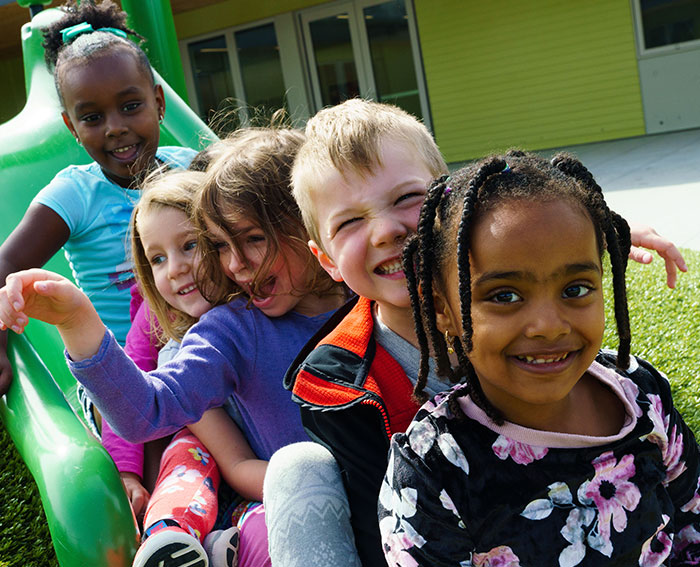Inclusion Basics

Inclusion Basics
What is inclusion? What are the policies around inclusion in early childhood settings? Why is inclusion important? The resources linked below can help answer these questions and more! Check out the policy statements from the Division for Early Childhood, National Association for the Education of Young Children, and the US Department of Education to learn more about how inclusion can be defined and applied in early childhood settings.
DEC NAEYC Joint Position Statement
US Department of Ed. Policy Statement on Inclusion in Early Childhood Programs
Compilation of resources to support learning about DEC Recommended Practices and putting them into action
Materials to use in coursework and lectures

Access, Participate, Learn: Effective Inclusion Practices
Powerpoint presentation that gives an introduction to inclusion.

Meaningful Inclusion in Early Childhood (Video)
This video explores parent's perspectives on transitioning their children to early childhood settings. Teachers also outline what meaningful inclusion looks like.

Circle Time Magazine Season 3: Inclusion
Circle time magazine is a talk show style web-series produced by Cultivate Learning at the University of Washington. In Season 3, the Circle Time team focuses on inclusive practices, covering topics such as assessment, referral and evaluation for special education services, Individualized Education Programs and Individualized Family Service Plans, and more! The introductory episode provides a brief overview of the supports that educators and families of young children can access within the disability system.

Head Start Center for Inclusion Modules and Professional Development Tools
This set of modules and professional development materials focuses on supporting each and every child in childcare settings and includes topics such as: planning using activity matrices, curriculum modifications, embedded learning opportunities, and routines-based planning. Slides, activities, and handouts are freely accessible and can be adapted to fit the needs of your course. This website also includes teacher tools such as classroom visuals and social stories that can be downloaded for free and shared with students.

Understanding Inclusion Series
This six part series from the Illinois State Board of Education includes an introduction to inclusion, policies and laws related to inclusion, and the benefits of inclusive practices. Each module includes a brief pre-recorded presentation with reflection prompts, activities, and resources throughout.
Tools to share with your students

Teacher’s Guide: Member of the Class
This checklist (created by the Head Start Center for Inclusion) is meant to be used by teachers to help them see if a child is truly a member of the classroom community. It is completed from the child’s perspective.

Planning for an Inclusive Classroom: Supporting Children with Disabilities
The National Association for the Education of Young Children (NAEYC) developed 17 tips for making classrooms more inclusive.
Diversity, Equity & Inclusion

Anti-Bias and Equity Resources
These resources explore anti-bias and anti-racist practices in early childhood education. They can support students in their journey of unlearning and relearning and ultimately doing their utmost to tackle racial disparities to foster healthy identities and welcoming classrooms.

Intersectionality Resources
The resources found in this guide can be used to promote discussion and support student understanding of the intersectionality between issues of race, gender, and ability.
